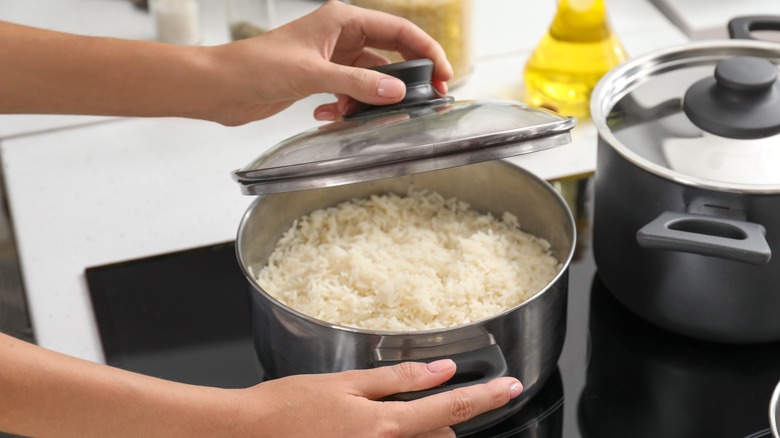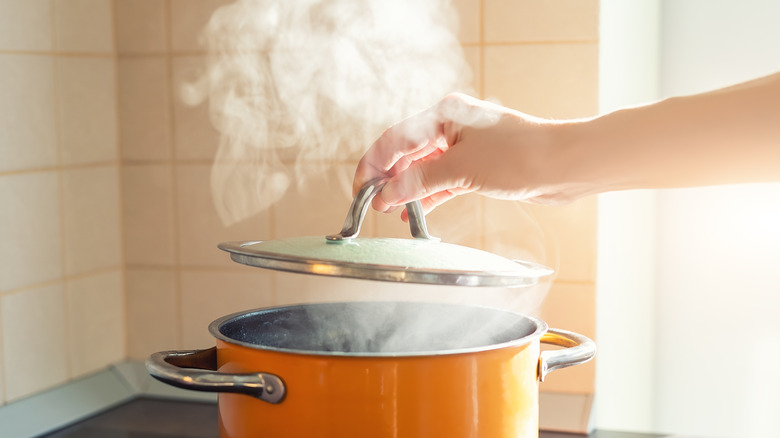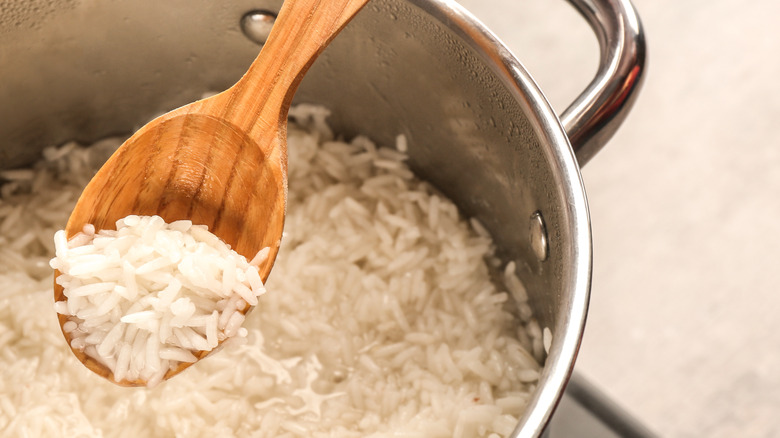Why Your Pot Lid Is So Vital For Making Perfectly Cooked Rice
Rice is one of the most common food staples in the world. Nearly 3.5 billion people globally depend on rice for their nutritional needs. But rice also happens to be a super versatile food. The grain pairs great with a spicy chicken coconut curry and adds body to a creamy chicken and rice soup. Any rice leftovers can easily be turned into porridge or fried rice with vegetables.
Unfortunately, cooking rice isn't as simple as turning it into a delicious meal. While the concept seems simple enough, it can often become a chemistry experiment gone wrong for a variety of reasons. Rice is cooked through a process called the absorption method. Water added to the rice becomes absorbed into the grains and gelatinizes the starches while it cooks. This process creates the soft, plump grains that we all dream about eating. But this isn't always the case, and one of the reasons why might be the lid on your rice cooking pot.
Why you need a tight lid
While rice cookers might not seem like they're worth the investment, they're the easiest way to cook rice. One reason for this is their tight-fitting lids. Once the cooker raises the internal temperature to water's boiling point it's able to maintain that temperature consistently. The water that cooks off into steam takes some of the heat with it when it rises to the top. When using a tight-fitting lid, the steam stays locked in and creates a nice humid environment for the rest of the water to absorb into the rice.
Using a lidded pot to cook rice can cause too much steam to escape. Sometimes this can lead to grains that cook up dry and hard because there wasn't enough moisture in the pot. If you're having trouble getting consistent results with your rice — no matter how much you adjust the water-to-rice ratio — the next thing you should be checking is your lid. A loose fit can compromise the quality of the rice. But it's also important to leave your rice alone. The more you check on your rice by lifting the lid, the more moisture you're losing in the process.
Loose lids sink ships.
Don't fret if your lid doesn't seal tightly to your favorite rice cooking pot. That doesn't mean that you have to buy a new lid or throw the whole set out. One of the easiest ways to fix this problem is to cover the pot with aluminum foil, and then rest the lid on top. This should be enough to fill in the gaps between the lid and pot where the steam is escaping.
Having this tighter fit will help give control over how your rice cooks. However, it's worth remembering that evaporation can be tricky. Other environmental factors — even including an overly tight lid — can affect the way your rice turns out. A pot's temperature might not steady itself at a consistent temperature. The hassle of handling things like heat, evaporation volume in comparison with water volume, and moisture levels is sometimes best left to the machines.


